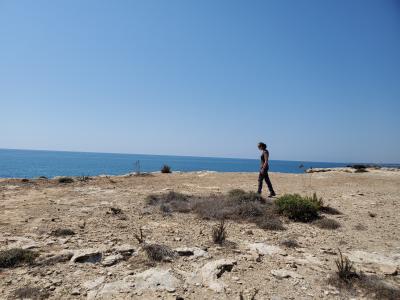The Ancient Seafaring Explorers in Cyprus (ASEC) project conducted its inaugural field season from September 10-September 20, 2019. The goals of the project are to investigate the earliest occupation of the island, specifically the Late Epi-Palaeolithic through early Neolithic periods, (ca. 10,000 -8000 years ago). The project aims to reveal evidence for the nature of these early hunter-gatherer occupations at sites on the south coast of Cyprus, both on land and those submerged by rising sea levels over subsequent millennia. This will help us establish whether the earliest human occupations in Cyprus were sporadic and rare or were part of a more widespread settlement of the island. Little is known of Cyprus’s earliest settlers, with the site of Akrotiri-Aetokremnos remaining the only well-dated Cypriot site of the Epipalaeolithic. Sites relevant to Cyprus’s early occupation are rare, difficult to find and, until about 20 years ago, were not even suspected.
Our past surveys in Cyprus along the Tremithos River Valley (2018) found evidence of similar early sites on a likely transportation route between inland chert sources and the coast, typically focused at tributary confluences. To link these earlier finds with our current project goals, we began, in 2019, systematic survey along the southern coast, west from the Tremithos River to Petounta Point. While our research focuses on the location and identification of very early finds (Late Epipalaeolithic to Early Neolithic), we noted all finds of archaeological significance, especially those that may be under the threat of damage or destruction. The survey was mostly in agricultural fields between the Pouzis River and Petounta, and the coastal cliffs and beaches along Petounta Point. While sites were found in all environmental contexts, Petounta Point was rich in diagnostic Epipalaeolithic material along the beaches, cliffs and, to a lesser degree, further inland. The most spectacular finds, though, we located on notable promontories along the cliff edges. These are strategically located with sweeping views east to Cape Kiti, west to the Vasilikos cement works and inland to the Troodos foothills and Stavrovouni. In addition, there is high potential here for in situ material in pockets of preserved soil.
Lisa
Maher
Research Date:
2019
Region(s):
Research Theme(s):
Campus Affiliation:






